Flip Chart
Use the 2-sided presentation tool to walk your patients through LSS, their treatment options, and what to expect with the mild® Procedure.
As an Advanced Practice Provider (APP), you are an integral part in helping patients with lumbar spinal stenosis (LSS) get on the path to lasting relief.
In this webinar workshop, led by our panel of mild® experts, APPs Ashley Comer, NP, Marie Zambelli, NP, Kelsey Kimball, PA, Lauren Cote, NP, Patrick McGinn, PA, Kristen Klein, NP, discuss how patient education and proper outcomes assessment play an important role in optimizing patient outcomes after the mild® Procedure.
Access the webinar here:
Looking for more info on mild® patient identification criteria?
Check out our blog: Identifying & Educating mild® Patients – APP Guidance
Sign up to stay informed and receive the latest updates!
Sign Up NowAccording to our Advanced Practice Provider (APP) Advisory Board, imaging review, a key aspect of mild® patient candidate identification, is often not included in initial schooling. To help APPs learn the basics of image review, become more familiar with identifying anatomical landmarks, and understand how to confirm if a patient is a candidate for the mild® Procedure, we asked James Lynch—an APP with the Pain Consultants of San Diego—to walk us through his tips and techniques for magnetic resonance imaging (MRI) review. In the following article, he shares pearls for becoming confident in imaging review and provides a series of videos so you can follow his step-by-step approach to determine if patients with lumbar spinal stenosis (LSS) should make the move to mild®.
As an APP in an Interventional Pain Medicine practice that offers the mild® Procedure, reviewing MRI images to determine the presence of hypertrophic ligamentum flavum (HLF) is a critical aspect of my role. Prior to joining this practice, I had very little experience reviewing MRI images. It was not part of the core curriculum while training to become an APP, and it was not an area that I felt very confident in. I’ve become more familiar and proficient with imaging review; however, I can say that it’s much more straightforward than it may initially seem. Through hands-on experience, by sharing clinical pearls among peers, and by watching step-by-step videos like those included in this article, I became competent, comfortable, and confident performing image reviews to identify mild® patient candidates—and I know other APPs can too.
We know that up to 85% of spinal canal narrowing is caused by thickened ligament. When we see patients with symptomatic LSS, if HLF is present, we will likely advance to mild® to provide patients long-term relief using a therapy that has a safety profile equivalent to an epidural steroid injection (ESI), but with lasting results. Being able to review a basic MRI empowers me to identify patients who may benefit from the mild® Procedure and confidently present my recommendations to them. This confidence helps build trust between me and my patients, and makes them feel more comfortable and assured prior to scheduling their mild® Procedure. Having more patients move to mild® means that I’m giving my patients a chance to achieve clinically meaningful, statistically significant improvements in mobility, Oswestry Disability Index (ODI), and pain reduction on the Numeric Pain Rating Scale (NPRS). It’s also incredibly rewarding to hear patients tell me about what they’re able to do now that they can walk further and do more activities than they could before.
LSS is highly recognizable by the signs and symptoms patients commonly exhibit, including pain, numbness, or heaviness when standing or walking, and finding relief by sitting, bending forward, or sleeping curled in the fetal position. When we see these signs in our patients, we’ll order an MRI to confirm the diagnosis and determine whether the patient is a good candidate for the mild® Procedure.
When we request an MRI, we’ll get a report and the imaging back for that patient. During my review of the report, I look line-by-line, specifically confirming whether the report notes central canal stenosis. It is also helpful to make note of other contributors to central canal stenosis (such as enlarged facets, disc bulge, etc.) in order to properly prepare a patient for potential follow-up expectations.

Tip: As you gain comfort with image review, practice reviewing the MRI first and report second to confirm their diagnoses.

In the example shown here, I would note the following:

Reminder: You can also request that the radiology report include a measurement of the HLF, which can make it easier to review.
Because I have confirmed the presence of central canal stenosis in the report, I’ll then review the imaging to determine whether the patient is a candidate for the mild® Procedure. You can also take the reverse approach and review the imaging first, and then use the radiology report as a confirmation of your own findings.
A note on software: While the specific software demonstrated in this blog is Ambra Health, much of the imaging software used today is similar in function and review procedures. Whether you’re using Ambra Health, Sharp, or another software option, the tips and tricks demonstrated in this blog should be consistent, regardless of the software you’re using.
In pulling up the images, I typically begin setting up the images to facilitate a clear and efficient review process. Begin by adjusting the layout of the software to show 2 images at the same time.
On the left-hand side, we will show the sagittal view, or vertical cross-section of the patient. On the right-hand side, the axial view, or horizontal cross-section of the patient, will be displayed.
Press the “Link” command in the system software to correlate the images together and select the STIR images (T2 weighted images).

Tip: The reason I use the T2 image is because the cerebral spinal fluid actually brightens up, making it a lot easier to assess the spinal canal.
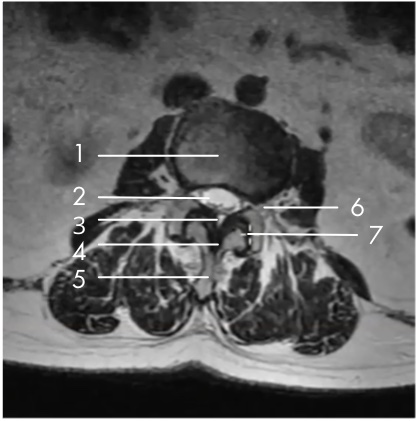
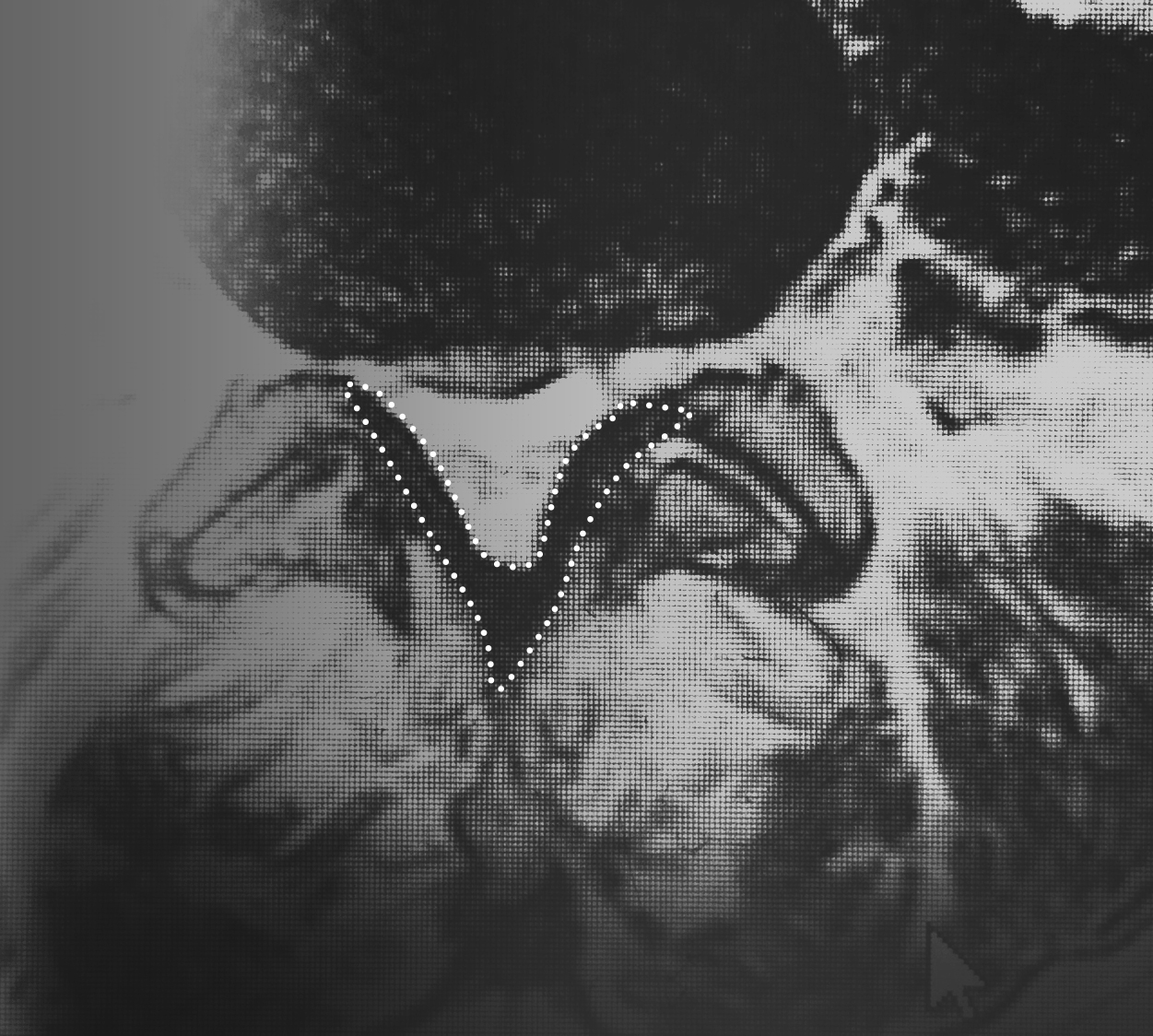
My specific area of interest in evaluating the mild® patient candidate is the small black area, which is the ligamentum flavum, highlighted in the image here.

In the small white area, we can see the central canal where the nerves are housed. In this image, we can see that the canal is very small, with very little white showing. This is consistent with central canal stenosis, and in this case, we can see clearly that the hypertrophic ligamentum flavum is compressing the nerves.

By moving our image up to L2-L3, we can see an excellent comparison of the healthy central canal. The large white area shows that at this level, the thin black ligament is not compressing the nerves.
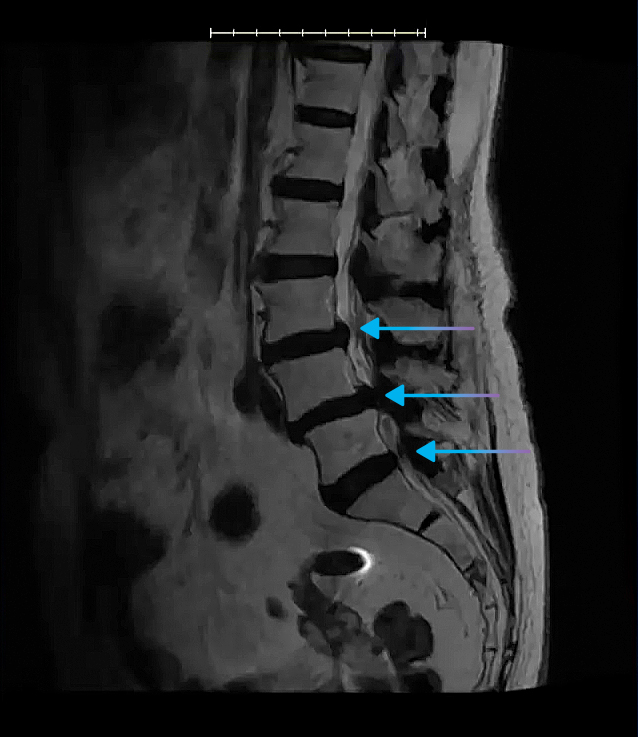
In the sagittal view, you’ll be able to see clearly where the spinal canal narrows, and this is helpful in identifying all levels where the central canal is stenosed.
We can also see here that the patient has a disc bulge, indicative of multi-factorial central canal stenosis.
It’s important to remember that comorbidities are common among LSS patients—in fact, a Level-1 clinical study of mild® patients demonstrated that just 5% of patients presented with central canal stenosis only. The presence of comorbidities, such as foraminal narrowing, lateral recess narrowing, or facet hypertrophy DO NOT RULE OUT patients as mild® Procedure candidates. Indeed, the same clinical study found that the majority of patients with comorbidities achieved an ODI improvement of ≥10 points at 2-year follow-up.
Using the length tool in the software, I can draw a line across the ligament (the dark area indicated in the image below) to obtain the ligament measurement.

Here, the measurement clearly shows an HLF of 6.38 mm. I will then repeat this measurement process at each of the levels that are affected by central stenosis (per the report, and as seen in the sagittal view).

Tip: As a reminder, any patients with HLF ≥2.5 mm may be considered a candidate for the mild® Procedure.
Once you become familiar with imaging review, you’ll develop your own tips and tricks that make the process easier and more efficient for you. Here are a few things that I suggest that can help when you’re just getting started:
In this video, you can see an end-to-end example of the imaging review for an ideal mild® case. In under 5 minutes, you can see how I:
When a patient can’t have an MRI, we will instead send them in for a computed tomography (CT), ideally with a myelogram. A myelogram will highlight these relevant anatomical structures, so you can see the ligament and determine the patient’s candidacy. Even if a myelogram is not an option, be sure to indicate a primary diagnosis for lumbar stenosis when you order the CT, and the radiologist will then assess that patient for lumbar stenosis and HLF.
When patients are in the office, I’ll often bring my laptop into the exam room and show them their imaging on screen. Being able to see their own anatomy, and specifically the hypertrophic ligament pressing on the nerves, is incredibly helpful to demonstrate this root cause of their LSS.
Then, I can also use the imaging to clearly point out how mild® addresses a major root cause of LSS by removing excess ligament tissue and leaving no implants behind. I’ll also show them where the nerves are being compressed and educate them about how mild® restores space in the spinal canal, which reduces the compression of the nerves. Most patients understand how the mild® Procedure works much more easily when they can see the images themselves, and it also helps them realize how the mild® Procedure can provide long-term relief and restore mobility.
When I first started with imaging review, I was much less comfortable and confident than I am today. Knowing that our practice is committed to helping more patients move to mild®, I recognized that becoming comfortable with imaging review was a critical aspect of my role. Even though MRI review was not something included in my initial APP education, I realized that becoming proficient gave me an opportunity to bring additional value to our patients and practice.
The best way I found to get comfortable with imaging review was to dive in and review previous cases so I could become familiar with the anatomy and structures. Beyond hands-on experience, there are resources that offer additional support, including:
With additional practice and experience, you’ll quickly become much more comfortable with imaging review. You’ll also notice how many of your patients with LSS have HLF and are candidates for the mild® Procedure. By putting more patients on the path to lasting relief with mild®, you’ll get to see first-hand how regaining mobility can be a life-changing improvement for the patients in your care.
Advanced Practice Providers (APPs) play a vital role in helping patients understand their lumbar spinal stenosis (LSS) diagnosis and treatment recommendations. By developing strong provider-patient communication, you’re taking the first step towards achieving positive outcomes and enhancing the patient experience.
Why is patient education so important?
Based on the data above, it is clear that patients over 65 years of age–the group most likely to suffer from LSS–may need more support to understand their condition and treatment plan. With the recognition that both lumbar spinal stenosis and poor health literacy can increase your patients’ susceptibility to poor physical functioning, pain, and limitations in activities of daily living, APPs should feel especially empowered to engage patients. This includes helpful education and dialogue that supports their understanding and helps them feel more comfortable taking the next step on their path to lasting relief.
In the following article, you will find step-by-step guidance and pragmatic suggestions that you can start using today, to help you ensure that your patients leave their consultation feeling confident and excited about their opportunity to make the move to mild®.
Watch: See APP Ashley Comer’s complete talk track for presenting mild® to her LSS patients.
Use the mild® patient brochure as a tool and follow these simple steps to help your patients better understand their lumbar spinal stenosis diagnosis and the benefits of the mild® Procedure.
![]()
Instead of using complex medical terms or acronyms, simplify your explanation with common words, phrases, and analogies to help patients understand their diagnosis and treatment options.
According to the CDC, nearly 9 out of 10 adults struggle to understand and use personal health information when it’s filled with unfamiliar or complex terms. (Source)
On the first page of the mild® patient brochure, you’ll find helpful illustrations that demonstrate the anatomical changes associated with LSS and the symptoms patients typically experience. During your patient consultation, be sure to highlight:
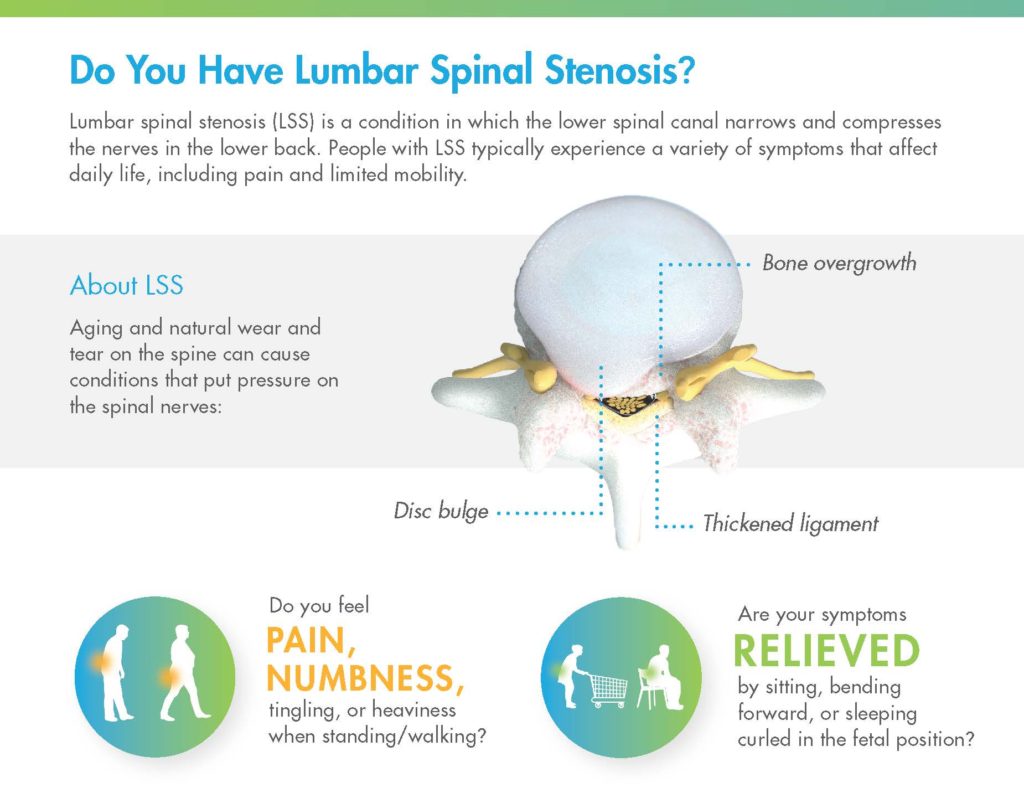
![]()
Many APPs and physicians use common, real-life analogies to help patients identify and understand their LSS symptoms. A common analogy that many patients may relate to is the “shopping cart syndrome.” Explaining that patients with lumbar spinal stenosis often feel relief when bending over a shopping cart (because it reduces pressure on the compressed nerves) can help patients recognize how this condition impacts their daily life.
Once you’ve established the common signs and symptoms of LSS, demonstrate what the MRI shows for that specific patient. Turn to the last page of the mild® patient brochure, where you can use the diagrams provided. Drawing directly on the patient brochure, indicate the following:
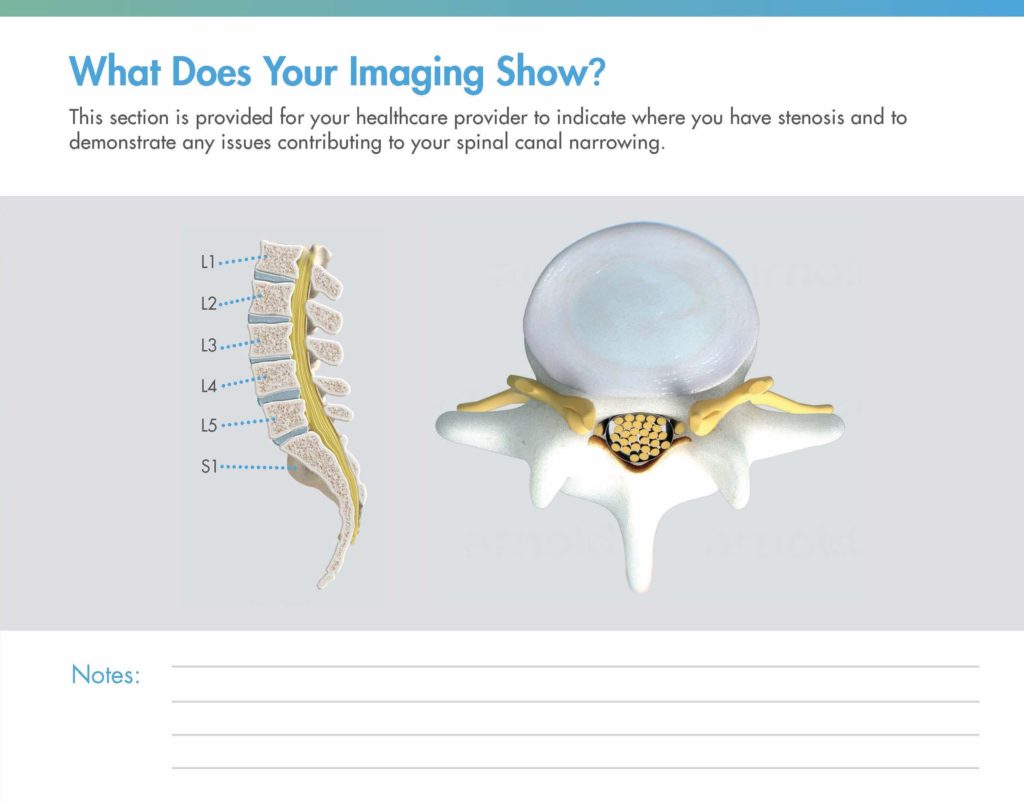
Watch: See how APP Ashley Comer uses the illustrations in the mild® patient brochure to demonstrate her patients’ specific areas of stenosis.
You can also accompany the spinal illustrations in the mild® patient brochure with an added tool, such as a spine model or the patient’s MRI to reinforce the anatomical positioning of the problem or validate the diagnosis, respectively.
Once patients fully understand their condition, walk them through all of the reasons why you recommend they make the move to mild®. If you turn back to the beginning of the brochure (or access the same information in the mild® patient flip chart) and review the remaining pages, you can quickly cover the advantages of mild® relative to other treatment options, and prepare your patients for what to expect during and after their mild® Procedure.
Because epidural steroid injections (ESIs) were historically the standard of care for lumbar spinal stenosis patients, your patient may be expecting you to recommend another injection. You can explain that the data shows that there is no benefit to giving more than one ESI before mild®, and that giving more than one ESI delays the patient from receiving the longer-lasting, more effective mild® Procedure.
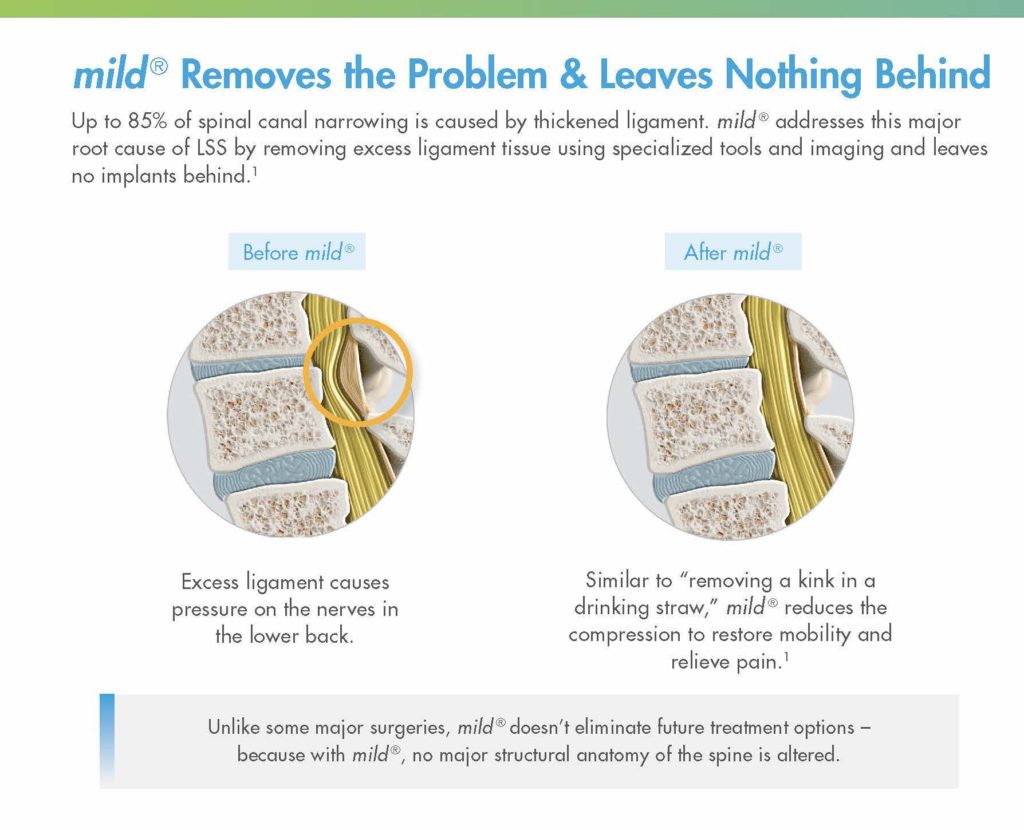
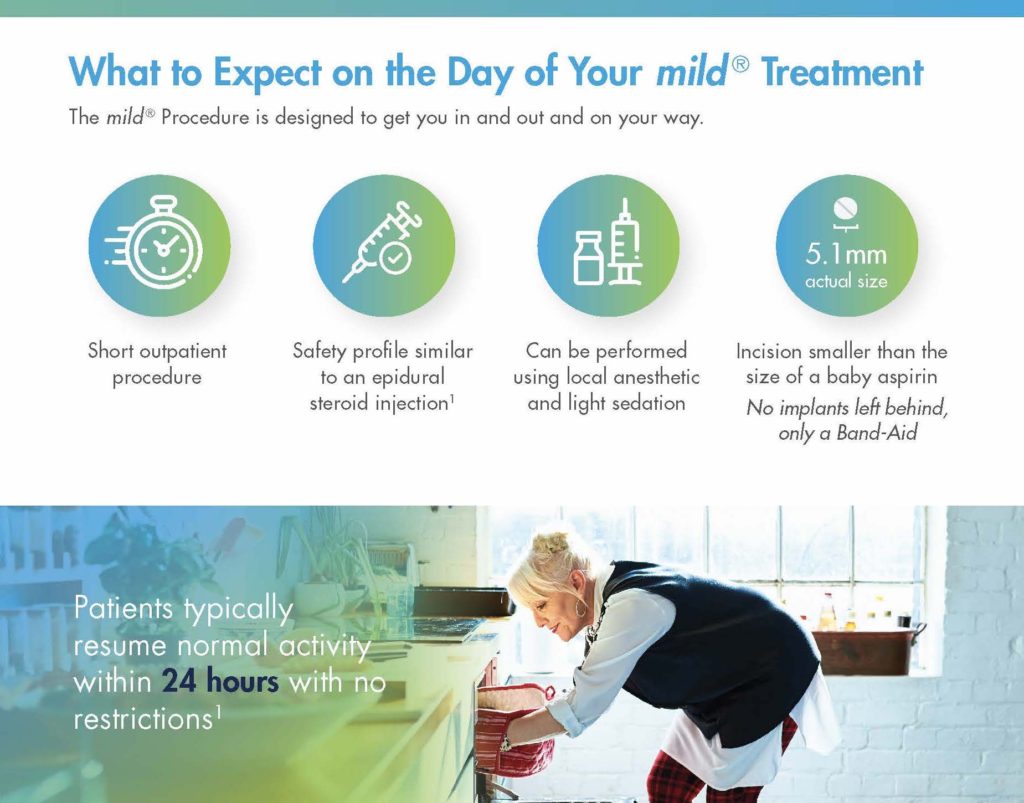
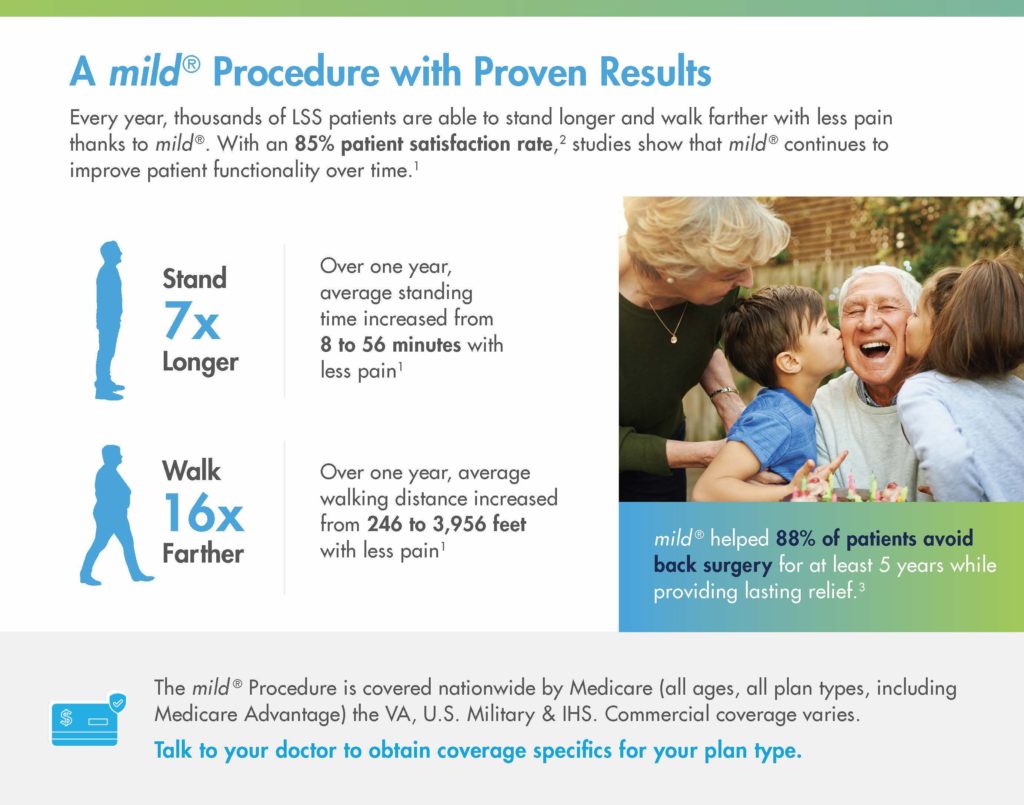
![]()
Every year, thousands of lumbar spinal stenosis patients are able to stand longer and walk farther with less pain thanks to the mild® Procedure, but those results aren’t achieved overnight. Improvements in patient functionality are typically achieved over time, with patients gradually increasing standing time and walking distance. If you set expectations in advance, patients may be more excited and satisfied to see their own functional improvements over time.
LSS patients rely on APPs as critical members of their care team. Across the patient journey from diagnosing your patients’ LSS to finding relief with the mild® Procedure, APPs are key in supporting patients, helping them understand their condition, and feeling confident about their decision to make the move to mild®.
At Vertos, we recognize and support the role of APPs and are committed to providing education and resources that help you put more LSS patients on the path to lasting relief.
Don’t miss out on the latest and greatest tips and tools from Vertos.
Interventional Pain Management is a fast-growing specialty. As new lumbar spinal stenosis (LSS) procedures become available, practices are evolving the way they collaborate and work together to optimize patient care. The mild® Procedure’s patient selection process is quite simple, but requires imaging review, which is often not a part of Advanced Practice Providers’ (APP) traditional education.
The Vertos APP Advisory Board has emphasized the need for educational tools for APPs who would like to develop their image review skillset. Two of the esteemed Vertos APP Board Members, James Lynch, PA and Kelsey Kimball, PA, partnered with their physicians Dr. Michael Verdolin and Dr. Ajay Antony to provide an interactive workshop focused on enhancing imaging review skillsets. View the interactive workshop where they cover imaging basics, navigating software, measuring the ligament, and more!
Looking for more info on mild® patient identification criteria? Check out our blog: Identifying & Educating mild® Patients – APP Guidance.
Also, be sure to connect with us to stay informed of upcoming APP-specific educational and peer engagement opportunities. Sign up and receive the latest updates!
Sign Up Nowmild® is often referred to as a “simple little procedure” that can make a major impact on the quality of life and mobility for lumbar spinal stenosis (LSS) patients. Minimally invasive lumbar decompression (mild®) removes the problem and leaves nothing behind—no implants, no stitches—allowing patients to stand longer and walk farther with less pain. A short, outpatient procedure, it is performed through a single 5.1mm incision in the patient’s lower back, addressing a major root cause of lumbar spinal stenosis by removing excess ligament tissue. Patients typically resume normal activity within 24 hours with no restrictions.
So, how do practices describe this “simple little procedure” to their patients? We like to say the mild® Procedure is similar to “removing a kink in a drinking straw,” reducing the compression on the nerves in the lower back to restore mobility and relieve pain.
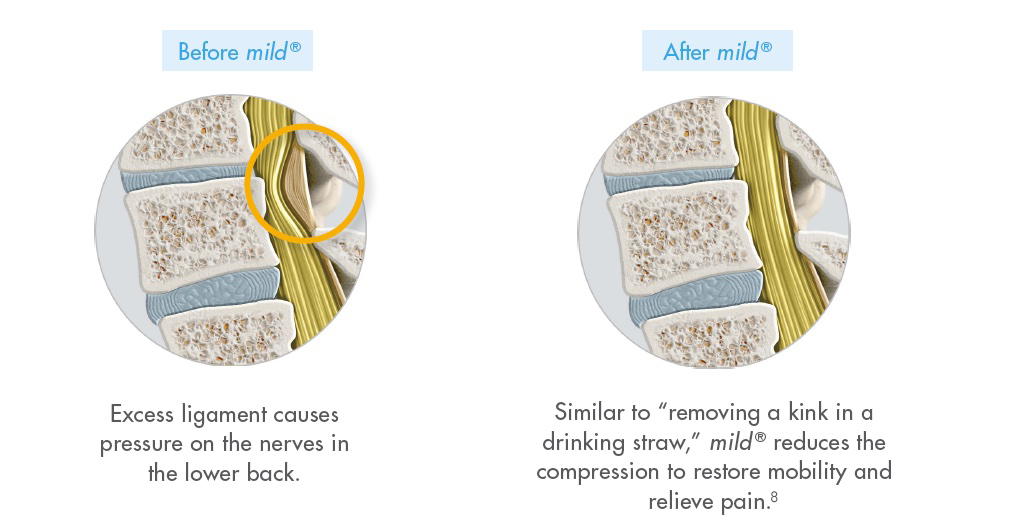
We asked a group of mild® physicians how they describe the mild® Procedure and its big, life-changing potential to their patients and referring physicians. We heard a lot of fun analogies—here are a few of our favorites.
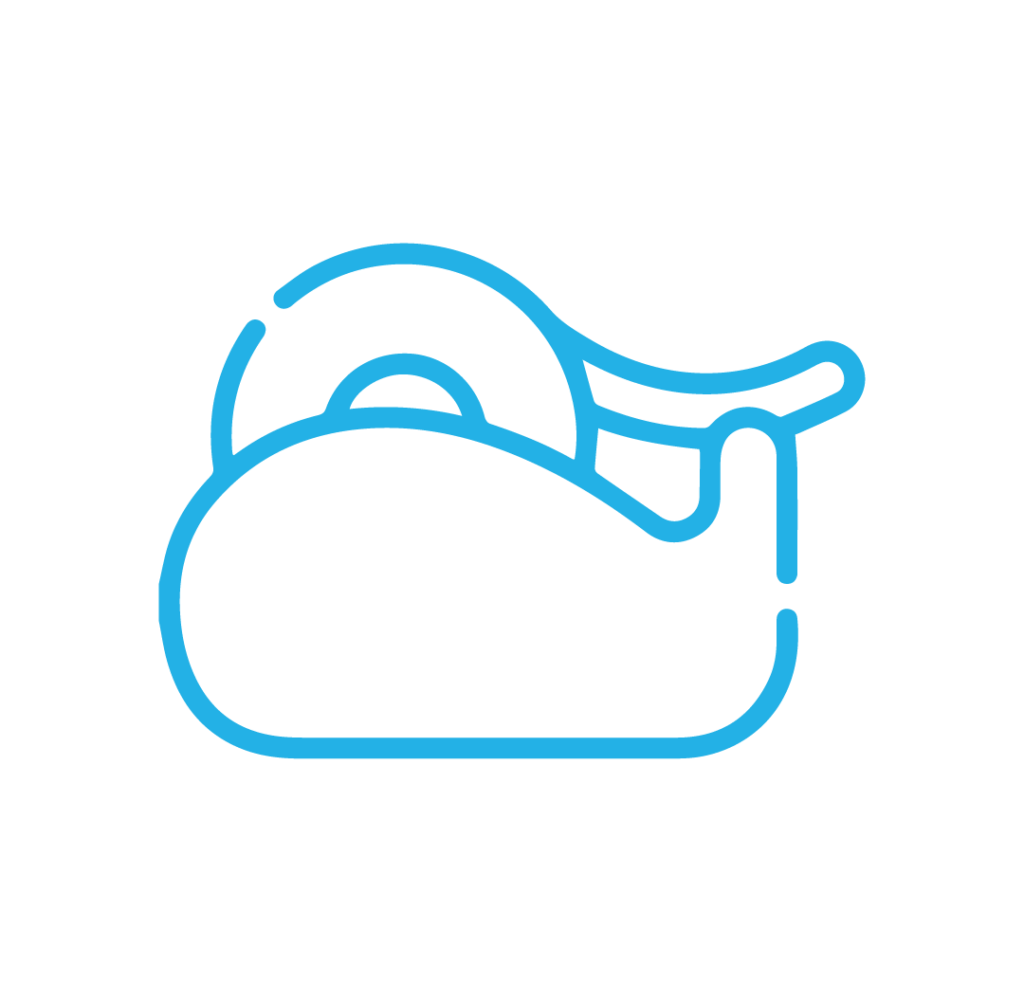

I describe mild® to my patients as a “quality-of-life procedure.”
I walk them through my algorithm and I say, “Listen: I can put a temporary Band-Aid [solution] on this for you with an epidural steroid injection (ESI), or I have a tool in my toolkit that could hopefully fix this for you where it’s not just a Band-Aid. It really improves your quality of life.”
Once you frame it this way for patients—as an epidural being a Band-Aid, with mild® being more of a definitive procedure—you have a captive audience that typically wants to go ahead and get a percutaneous decompression.


Our patients are generally familiar with cardiology procedures. So, I tell them lumbar spinal stenosis treatment options are similar to the options available for patients with coronary artery stenosis. You can either treat them with meds to improve blood flow or put in a stent to open it up more permanently. The mild® Procedure restores space around the spinal cord, just like a stent restores space in your blood vessels.
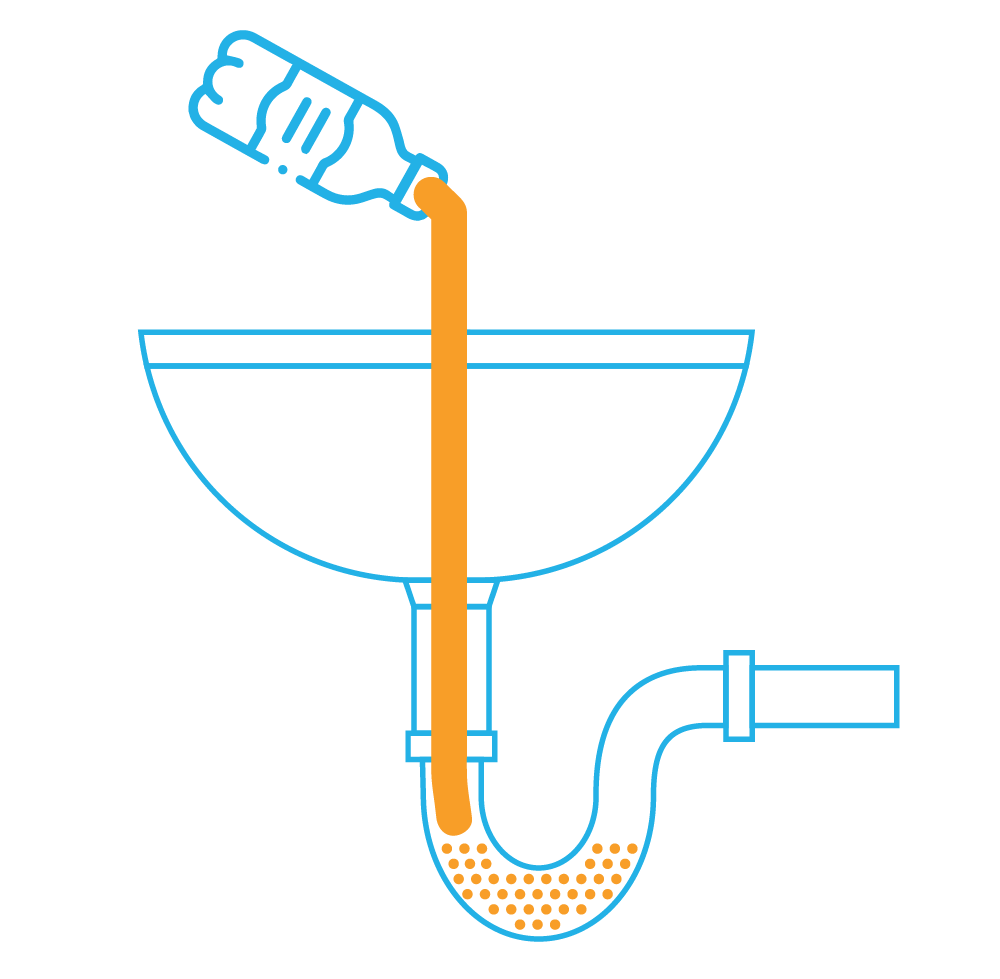
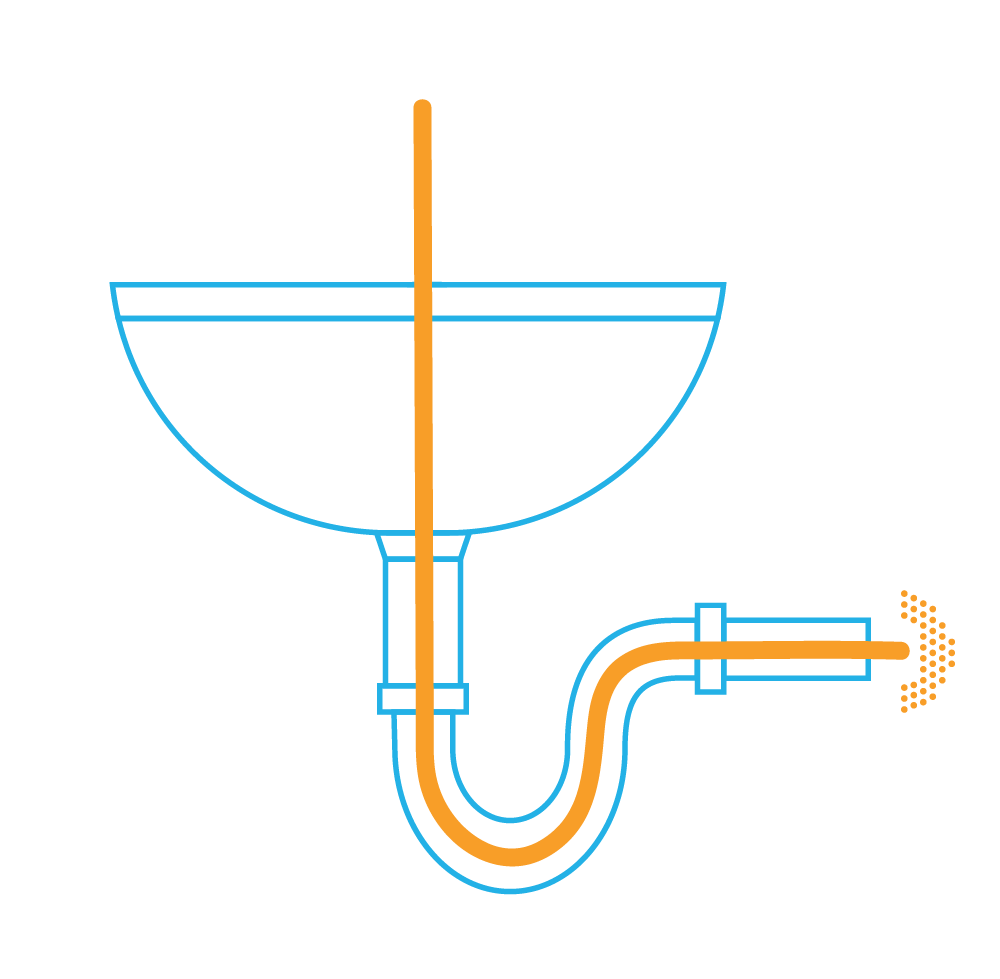
I tell patients: “Your spinal canal is kind of like your sink when it gets clogged. If your sink is really clogged, you can pour Drano down it all you want. But that’s a temporary fix, and it doesn’t work long-term. At some point, you’ve got to get in and unclog the drain.”

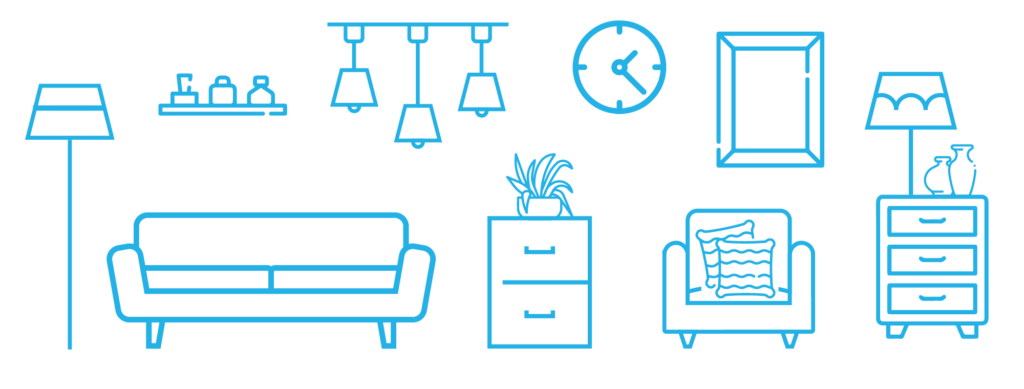
I describe how mild® works like fixing a room that is overcrowded with furniture. I tell them:
“Imagine a room full of tables and chairs, and you just can’t move around. What I am going to do today is just take a couple of chairs out to make some more space, so your anatomical structures can move around easily.”

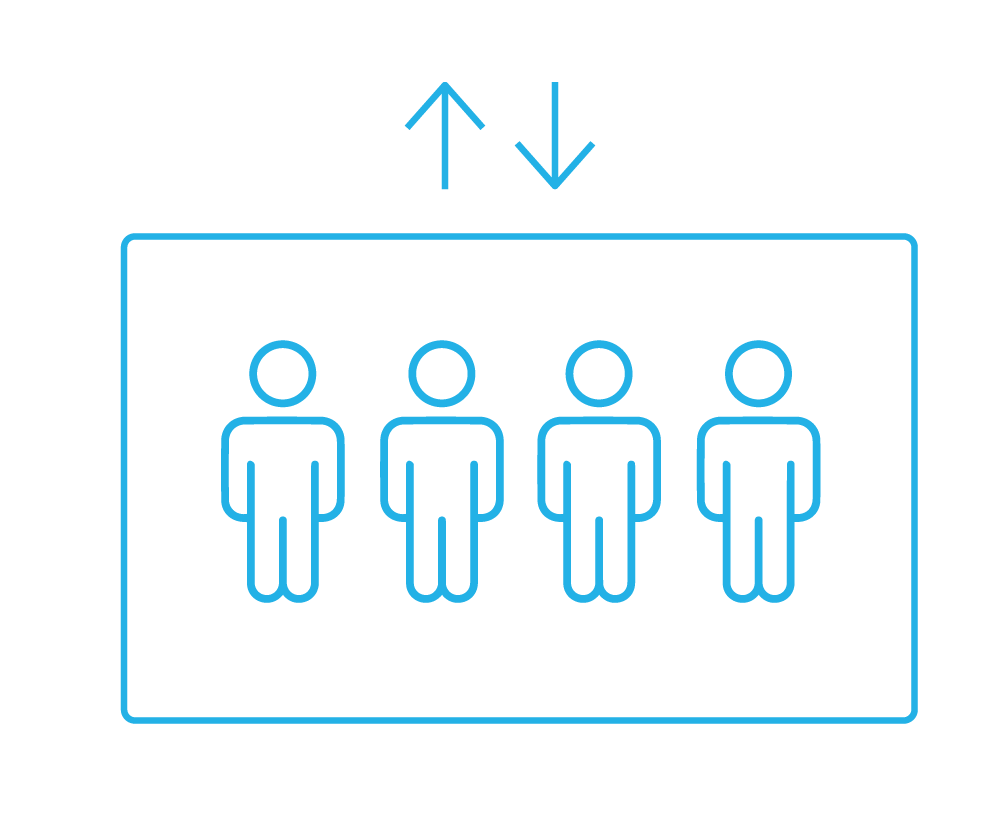
“When I describe what stenosis/LSS does to a patient’s spinal canal, I compare it to having too many people in an elevator. What we do with mild® is open the door and let a few people out so that the folks remaining have more room to move freely for the ride.”
How do you describe mild® to your patients? If you have an effective analogy you use to talk about the benefits of mild® or its approach, we’d love to hear about it. Email us today. If you need additional patient resources, please contact your Vertos representative.
As a mild® provider, it’s important to brand yourself as a mild® practice to attract new patients and educate people in your community who are searching for relief from lower back pain and mobility issues. By presenting the mild® Procedure as part of your treatment offerings, you can highlight that your practice provides advanced lumbar spinal stenosis (LSS) treatment options for potential patients searching for alternative solutions to epidural steroid injections (ESIs), pain medication, or back surgery.
The following patient education, healthcare professional, and digital (web/social) resources will help ensure your practice is well-equipped in identifying and educating the community and your referral networks about LSS, and how mild® can play an effective role in a patient’s care path.
Outfit your practice so patients know you offer the mild® Procedure.
Add information about mild® to your website to help educate patients about the procedure.
Additional content and tools designed specifically for APPs to help identify and educate patients.
Build connections with referring physicians to help attract more patients to your practice.
Word-of-mouth can be one of the most powerful tools to grow your mild® practice. Encourage patients to help advocate on your behalf.
We’re here to help! Team Vertos is committed to ensuring your practice has a strong foundation of tools to educate your community about the mild® Procedure and how its benefits are transforming the lives of patients. Please reach out if you need further assistance in optimizing these resources.
To order patient education marketing materials (brochures, posters, etc.) or to schedule a staff training, please contact your local Vertos representative.
For additional marketing-related questions, please email us at mild@vertosmed.com.
Interventional Pain Management is a fast-growing specialty. As new lumbar spinal stenosis (LSS) procedures become available, practices are evolving the way they collaborate and work together to optimize patient care. The mild® Procedure’s patient selection process is quite simple, but requires imaging review, which is often not a part of Advanced Practice Providers’ (APP) traditional education.
Although image review can be intimidating, APPs report that the learning curve is relatively short and there are resources available to help you get started. Below are some tips from mild® APPs on how they quickly established comfort with imaging review in their practice, allowing them to “look for the ligament,” identify hypertrophic ligamentum flavum (HLF), and educate mild® patients independently.
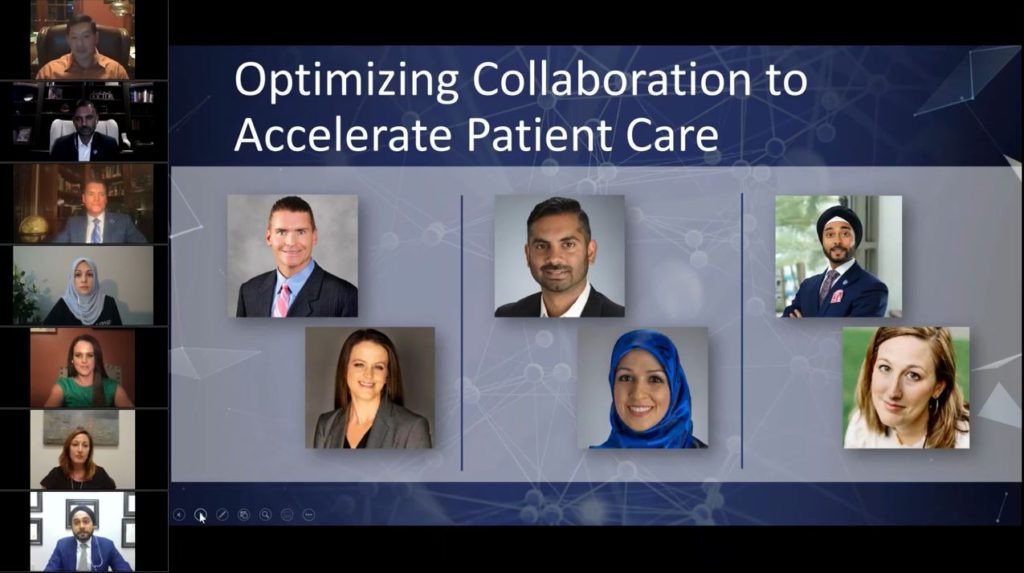
In a prior CME webinar hosted by the American Society of Pain & Neuroscience (ASPN), moderators Timothy Deer, MD; Dawood Sayed, MD and faculty members Navdeep Jassal, MD; Eugene Paik, MD; Ashley Comer, NP-C; Christine Christensen, APRN; and Zohra Hussaini, MSN, FNP-BC, MBA, APRN discussed how physicians and APPs can match more patients with the right treatments sooner by working together.
Visit ASPN’s websiteLooking for more info on mild® patient identification criteria? Check out our blog: Identifying & Educating mild® Patients – APP Guidance. Interested in APP-focused education and events? Sign up to stay informed and receive the latest updates!
Sign Up NowWe know that mild® is a great option for the lumbar spinal stenosis (LSS) patients in your practice—but it’s also a great way to differentiate your offering and attract more referrals from the community.
As mild® has gained more and more momentum—demonstrating a safety profile equivalent to epidural steroid injections, positive patient outcomes, and 5-year durability of results—our practice has made mild® a cornerstone of our LSS treatment algorithm. It’s certainly rewarding to see patients regain mobility and get back on their feet. Importantly, when these cases become success stories, mild® patients, their family members, referring physicians, or physical therapists become powerful advocates in the community, driving referrals and offering compelling testimonials that build credibility, motivate new patients, and improve your community’s access to this meaningful treatment.
It’s important to recognize that today, many people in our communities still think about pain management in terms of medications and epidurals. As interventionalists, we have an opportunity to educate them on the wide range of services we provide and how we can not only help manage symptoms, but also restore function, improve overall health, and enhance overall quality of life. If the mild® Procedure has yet to become part of your management of lumbar spinal stenosis (LSS), my colleagues share in a recent blog post how to integrate the procedure into an LSS treatment algorithm. Here are a few steps you should consider taking to reach and attract more patients:
As clinicians, we are often tasked with making complex concepts accessible to our patients and other clinicians, many of whom only know LSS as “chronic low back pain” or who believe options are limited to serial epidural steroid injections or surgery.
To introduce mild®, we utilize the patient education tools to emphasize several key points:
If they ask why our practice moves to mild® early in the treatment algorithm, we can reference this recent clinical study, published in Pain Management, which found that:
To help patients and caregivers access and engage with this information, I like to share a plain language summary document. It helps patients better understand how mild® can reduce the treatment burdens associated with frequent injections, provide lasting therapeutic results, and help our practice meet our primary goal of restoring function and achieving sustained improvement in quality of life.
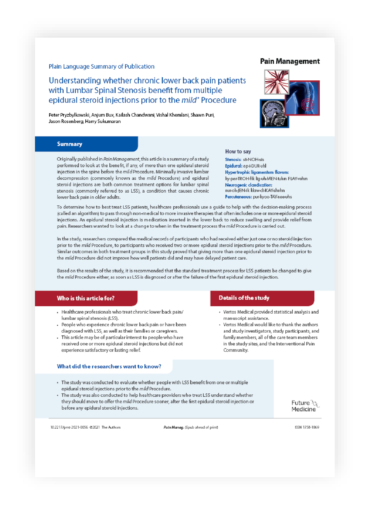
We also use the summary to educate and build relationships with referring clinicians, many of whom are unfamiliar with minimally invasive lumbar decompression, the procedure, and its impact on care protocols. The summary is written using simple language but is very detail-rich, making it a valuable resource for health stakeholders involved in collaborative care. When we send this to practices in our network, we like to strengthen the referring relationship by:
In addition to sharing the plain language summary, it can be helpful to leverage educational videos on your website to further inform patients about the benefits of mild® for lumbar spinal stenosis.
To help patients find the information they’re looking for, create a video summary that describes the information the patient is about to see. The shorter and more concise the description, the better. You can include specific details on the benefits of mild® leading with the key points patients care most about:
Success stories from patients who have benefited from your spinal stenosis treatment offer a powerful and influential tool for creating patient awareness and should form a cornerstone of your outreach efforts. When a patient finally finds relief, they usually want to help other people who are suffering get back on their feet.
Document your lumbar spinal stenosis patients’ treatment journeys and capture testimonials so you can share them on your website and social media platforms. Teach them how to recognize the signs of LSS in their friends and family members and encourage them to share their story.
Additionally, when working with referring care providers, implement strong post-procedure communication strategies to cultivate active, engaged partnerships. Following a mild® Procedure, we inform referring providers of their patients’ results, and help them understand what the patient can expect over time.
When APPs understand that patient functionality continues to improve as time progresses, they can help manage patient expectations. APPs working within our referring clinicians’ offices also appreciate frequent status updates. This often translates into additional patient referrals and better care partnerships.
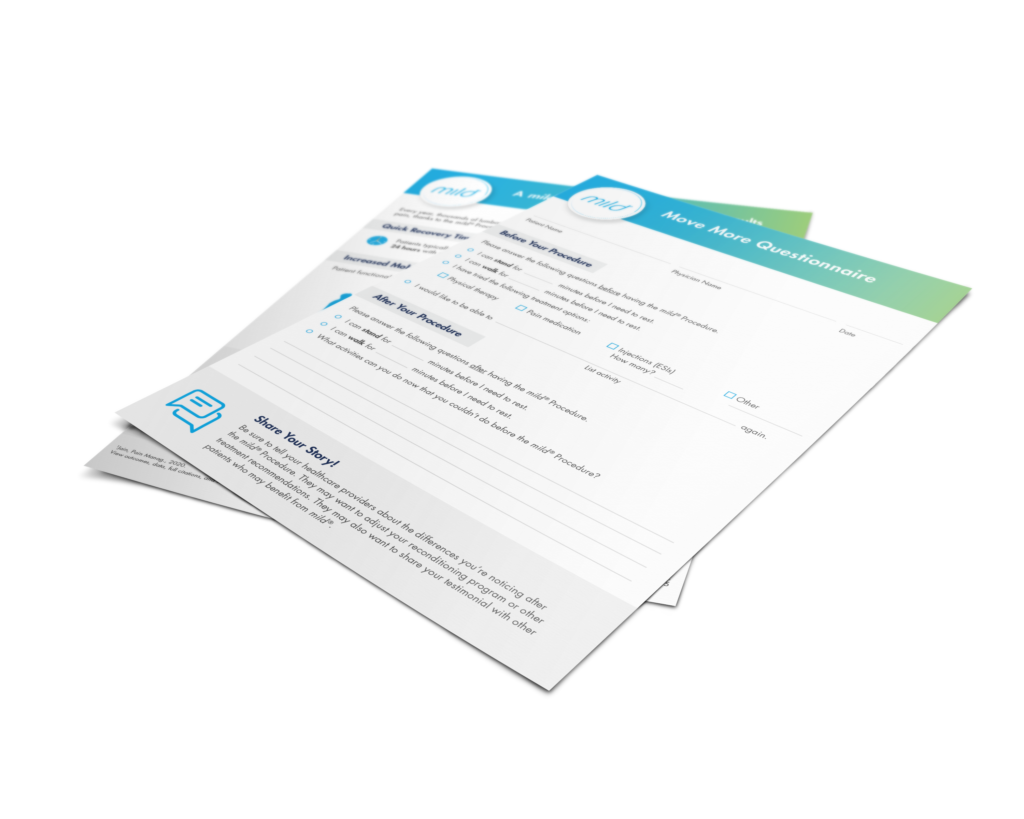
At the end of the day, our primary goal is to offer meaningful outcomes that restore function and reduce pain for patients in our community. To capture attention and positively impact more lives, it is fundamentally important that we make our communities aware of the full range of services we offer for lumbar spinal stenosis patients.
Taking this approach takes a little work but yields considerable reward. Successfully treating with mild®, using those successes to build lasting community relationships, and helping patients finally get on the path to relief, has brought our practice immense satisfaction, as well as steady increases in patients coming in to see what options we may have to treat their pain and increase their activity.
Injections falling short? Advanced IPM practices are moving beyond epidural steroid injections (ESIs) to offer the gold standard of care for lumbar spinal stenosis (LSS) patients. Review the new data where study researchers compared the medical records of participants who had received either just one or no steroid injection prior to the mild® Procedure, to participants who received two or more epidural steroid injections prior to mild®. Similar outcomes in both treatment groups in this study proved that giving more than one ESI prior to the mild® Procedure did not improve how well patients did and may have delayed patient care. Based on the results of the study, it is recommended that the standard treatment process for LSS patients be changed to give the mild® Procedure either as soon as LSS is diagnosed or after the failure of the first ESI.
Congratulations to authors and mild® physicians Peter Pryzbylkowski, Anjum Bux, Kailash Chandwani, Vishal Khemlani, Shawn Puri, Jason Rosenberg and Harry Sukumaran for the first ever plain language article to be published in Pain Management!
View the original article and share the plain language version with your community.
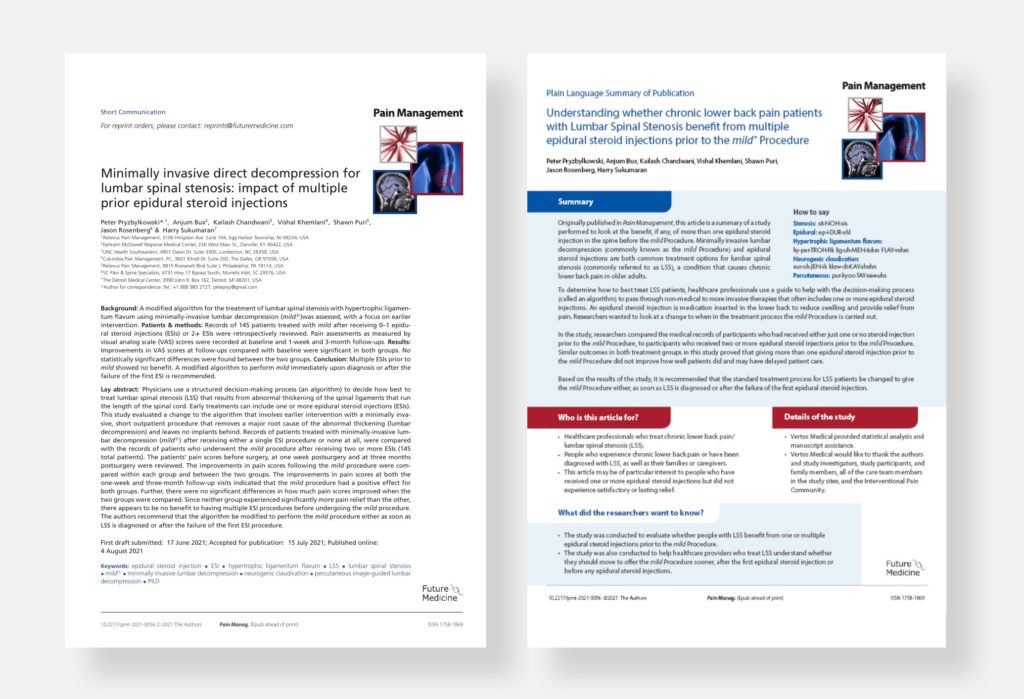



If your lumbar spinal stenosis (LSS) treatment algorithm relies on serial epidural steroid injections (ESIs) to relieve chronic lower back and leg pain associated with neurogenic claudication, data supports a different approach—performing the mild® Procedure immediately upon diagnosis of LSS or moving to mild® after the first ESI fails may help your patients avoid “ESI Exhaustion.”
We already know that epidurals are not capable of “curing” neurogenic claudication, a major root cause of lumbar spinal stenosis which is present in 94% of patients. The steroids in the injection are believed to reduce inflammation to relieve pain; however, injections are only treating the symptoms of LSS. For long lasting relief, debulking the ligament is required. Injections results typically last less than six months. To provide ongoing relief, patients often require 2-3 injections on average per year.

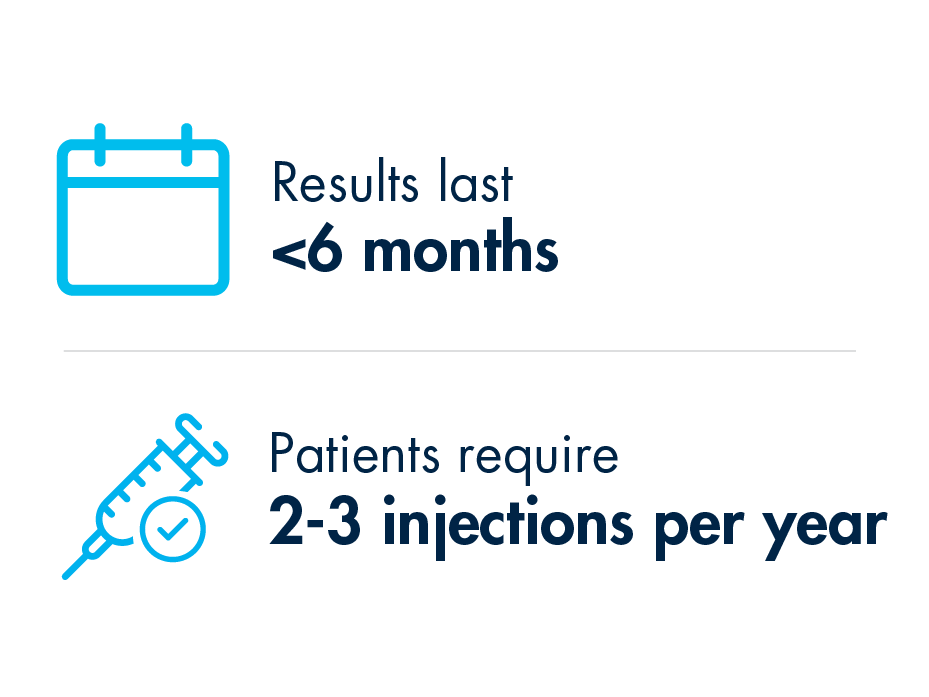
Due to the temporary nature of epidural steroid injection relief, and the requirement for repeat injections, many practices encounter patients with what is increasingly becoming known as “ESI Exhaustion.” ESI Exhaustion can be spotted in patients at any stage of LSS treatment or stenosis severity. Once you start recognizing the signs of ESI Exhaustion in your lumbar spinal stenosis patients, you’ll see why so many leading clinicians are moving to mild® earlier in their treatment algorithm.
When patients experience short-term relief for a condition as challenging as LSS, it can be easy for them to become frustrated and lose hope. Patients can become tired from needing to return for repeat injections. Other patients may start to feel hopeless if the injection is not effective or if it is only effective for a very short time. It’s important to remember that LSS patients often experience debilitating pain and loss of mobility that can have a devastating impact on their quality of life.
To help your patients remain optimistic and aligned to your treatment plan, educate your new and existing LSS patients about your treatment options early. Make sure they know that there is a procedure that offers the safety equivalence of an ESI, but with lasting results. If you are starting their treatment plan with a single epidural, inform them about the mild® Procedure during that first visit, so they know that if the ESI is not effective, there are other options that can help restore mobility by addressing a major root cause of LSS.
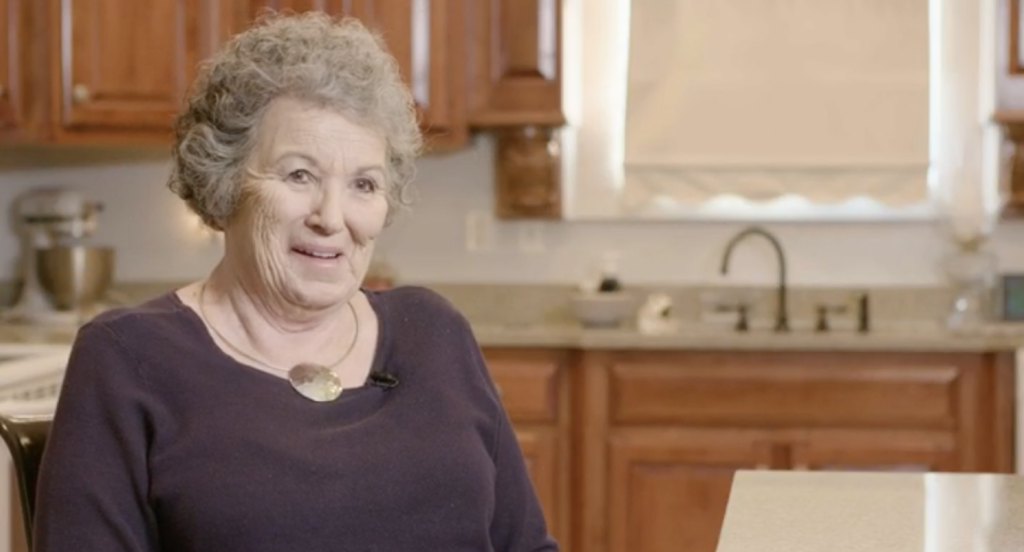
One of the more common questions patients have about a steroid injection is “how long will the results last?” Unfortunately, with ESIs, efficacy can vary by patient, and it can be difficult to predict the degree of relief or durability of effect for each. While studies have shown pain relief for up to six months in some lumbar spinal stenosis patients receiving steroid injections, other studies have demonstrated limited effectiveness.
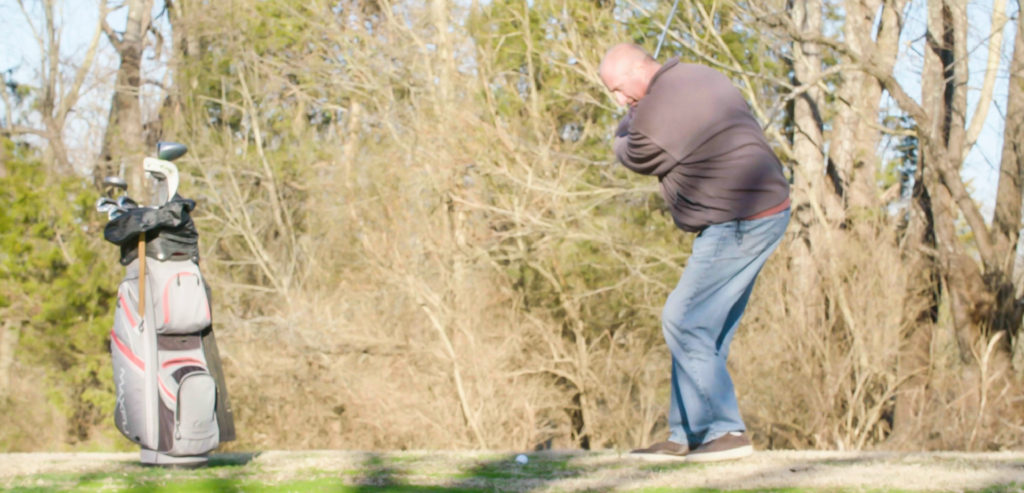
Even more vexing for some patients is that the durability of effect of an initial ESI may not be experienced with subsequent injections. To achieve effectiveness over two to three years, five or more injections per year may be required.
Rather than offering patients a series of injection after injection with short-term results, move to mild® after the first ESI fails. The mild® Procedure offers a clinically proven safety profile equivalent to ESIs, but with lasting results. A 5-year study completed by the Cleveland Clinic showed that mild® helped 88% of patients avoid back surgery for at least 5 years while providing lasting relief.
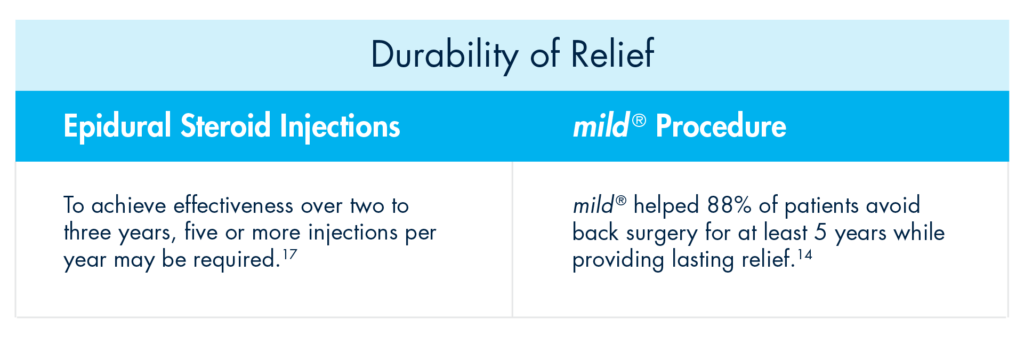
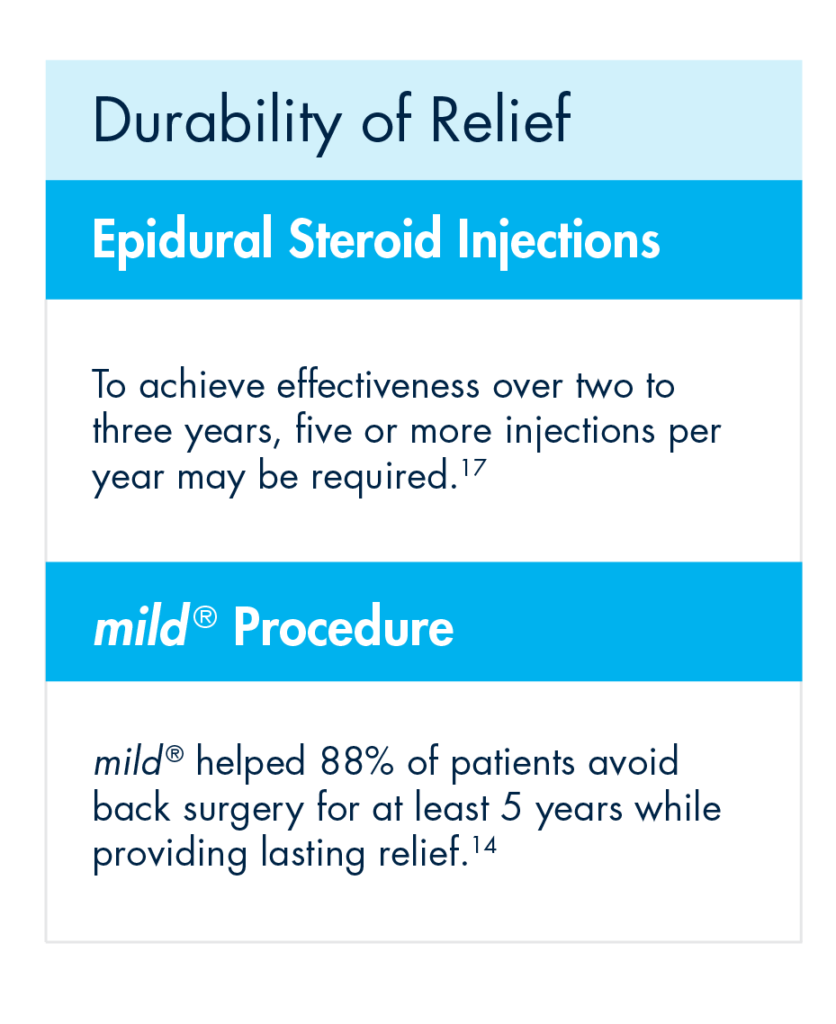
If patients are dissatisfied with their results and feel they’ve run out of options in your practice, they may start to search for another solution. By offering mild® as an early intervention, you can avoid losing patients and actually increase productivity in your practice. Upon diagnosis of LSS, inform patients that you offer mild®, a minimally invasive treatment option that offers durable relief.
If you have already treated a patient with an ESI and it failed, or the patient received an injection in another practice, there is no reason to continue to offer another injection. Most patients I’ve seen are excited to learn that there is another option. Moving to mild® gives them new hope in finding lasting relief.
While “ESI Exhaustion” is highly common among LSS patients, it is also completely avoidable. Recognizing that serial injections are often the standard of care when conservative care methods like exercise and physical therapy have failed to provide relief, we published a study in Pain Management that evaluated whether LSS patients benefit from multiple ESIs prior to mild®.
The article, ‘Minimally invasive direct decompression for lumbar spinal stenosis: impact of multiple prior epidural steroid injections’ compares outcomes between 145 patients receiving either 0/1 injections or 2+ injections at 6 centers in the United States. In reviewing results between the two groups, we concluded that there is no benefit to performing multiple epidural steroid injections before the mild® Procedure and that doing so delays the patient from receiving a longer-lasting, more effective mild® treatment.
Based on this study and other favorable data, we recommend performing the mild® Procedure for lumbar spinal stenosis patients immediately upon diagnosis of neurogenic claudication with hypertrophic ligamentum flavum, or after the first ESI fails.
What was the biggest news at the ASPN 2021 Conference? New mild® data! Five poster presentations highlight the reasons more practices are moving to mild® as a first-line therapy for lumbar spinal stenosis (LSS).
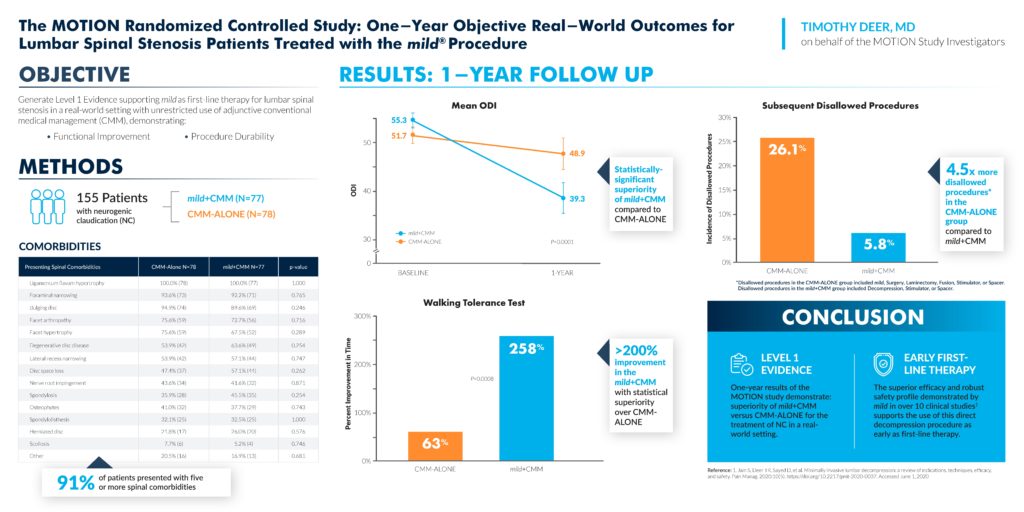
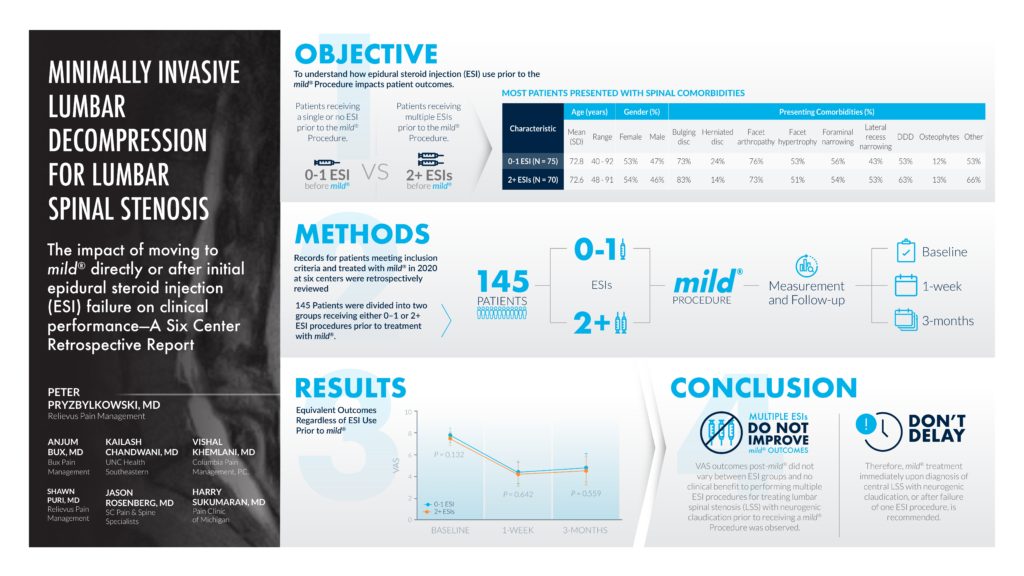
View Dr. Pryzbylkowski’s poster presentation here.
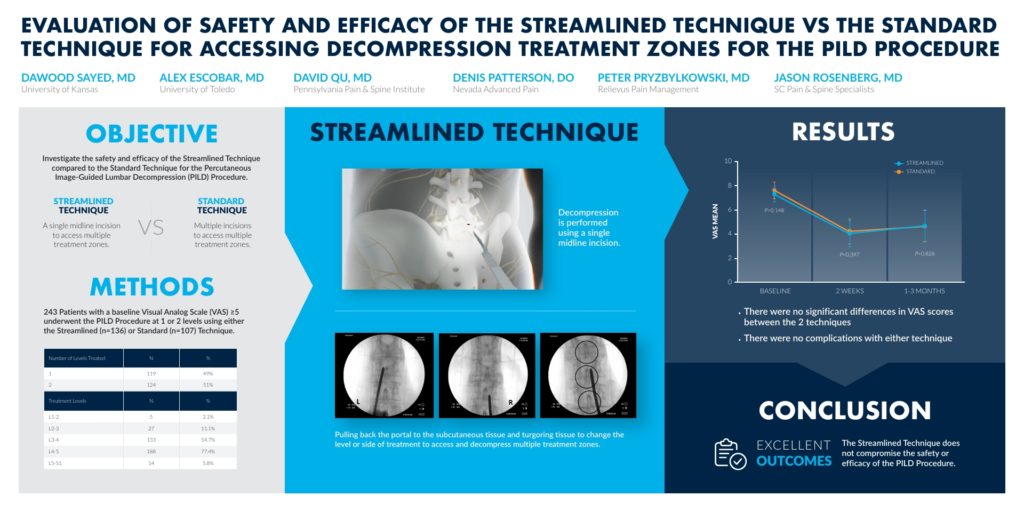
View Dr. Sayed’s poster presentation here.
View Dr. Jassal and Ms. Christensen’s poster presentation here.

Interested in on-demand education through didactic lectures, discussions and a compendium of case reviews from other leading experts? Find a list of webinars and webcasts from reputable societies, including American Society of Pain & Neuroscience (ASPN), Pacific Spine & Pain Society (PSPS), Women Innovators in Pain Management (WIPM) and Florida Society of Pain and Neuroscience (FSPN) below to learn more about identifying and treating patients with the mild® Procedure.
In this webinar, moderators James Lynch, PA and Kelsey Kimball, PA, partnered with their physicians Dr. Michael Verdolin and Dr. Ajay Antony to provide an interactive workshop focused on enhancing imaging review skillsets. View the interactive workshop where they cover imaging basics, navigating software, measuring the ligament and more!
In this Women Innovators in Pain Management (WIPM) webinar, moderator Jacqueline Weisbein, DO and faculty members Jessica Jameson, MD and FASA Lindsay N. Shroyer, MD discuss how to evaluate patients to determine appropriate candidates for PILD, use safety and efficacy data to understand where PILD fits in the LSS treatment algorithm, understand basic tenants and advantages of the Streamlined Technique and apply best practices for forging relationships with surgeon colleagues to help more patients.
“This procedure, you know, it’s not just for patients with stenosis… It’s performed with patients with stenosis, but they have other comorbidities… In my patients that are 70 years and older, they have facet arthropathy, they have stenosis, they have disc bulge and having those other conditions doesn’t make this a contraindication. You can still do this procedure on patients with those other comorbidities as long as they have greater than 2.5 millimeters of ligamentum flavum hypertrophy,” Dr. Shroyer says.
In this Pacific Spine & Pain Society (PSPS) training webinar, moderator Jason Pope, MD, and faculty members Steven Falowski, MD; Denis Patterson, DO and Jacqueline Weisbein, DO discuss how to evaluate patients to determine appropriate candidates for PILD, use safety and efficacy data to understand where PILD fits in the LSS treatment algorithm, understand basic tenants and advantages of the technique and apply best practices for forging relationships with surgeon colleagues to help more patients.
“We have highly under-treated lumbar spinal stenosis patients and the idea of just being able to either offer epidural steroid injections (ESIs) or jumping right to surgery is, I think, becoming a thing of the past and it’s not going to be part of our algorithm in that same manner,” Dr. Falowski says.
In this Florida Society of Pain and Neuroscience webinar, moderator Steven Falowski, MD and faculty members Nomen Azeem, MD; Michael Esposito, MD; Jackie Weisbein, DO; Stanley Golovac, MD; Navdeep Jassal, MD and Miguel Attias, MD discuss pathogenesis of LSS, spinal stenosis treatment algorithm, Vertos Medical’s mild® Procedure and more.
“We’re at a very pivotable point in terms of interventional pain. We’re crossing into the crossroads of interventional spine or minimally invasive spine, so let’s progress forward,” Dr. Jassal shares.
In this ASPN Virtual Think Tank, moderators Timothy Deer, MD and Dawood Sayed, MD discuss minimally invasive procedures for the spine, proper methods of patient selection for interventional pain techniques, and safety and efficacy of patients going forward. The Vertos Medical session, “Redefining the mild® Procedure: Emerging Techniques & Advancing the Treatment Algorithm” is led by Alex Escobar, MD; Denis G. Patterson, DO and Jackie Weisbein, DO.
“One of the many features that we see with innovation comes around optimizing techniques and not recreating something new and what we’ve found through many hours spent in the cadaver lab as well as employing this Streamlined Technique in many of our practices is that we can commonly access both sides of the lamina using the single entry point that we will see in a video shortly.” Dr. Escobar says.
In this American Society of Pain & Neuroscience (ASPN) webinar, moderators Timothy Deer, MD; Dawood Sayed, MD and faculty members Steven Falowski, MD; Anjum Bux, MD; Peter Pryzbylkowski, MD; Navdeep Jassal, MD; Alex Escobar, MD and Zohra Hussaini, MSN, FNP-BC, MBA, discuss how to evaluate patients to determine appropriate candidates for PILD, use safety and efficacy data to understand where PILD fits in the LSS treatment algorithm, and efficiently educate and manage PILD patients to ensure appropriate treatment expectations are established.
“We know that the effect of epidural steroid injections (ESIs) on symptoms of neurogenic claudication (NC) are limited and they’re short term and, as Anjum mentioned earlier, patients receiving steroids do have increased susceptibility to infection and immunosuppression. So, the great thing about this procedure, you don’t have to use steroids. If you’re worried about taking referrals from your surgical colleagues, I’d encourage you to go to your surgical colleagues and say, ‘Give me the patients you don’t want to operate on and see what I can do for them.’ You’ll be impressed and the patients will go back to those surgeons and then all of a sudden, you’ll see surgeons start to refer more and more to you for patients they don’t want to operate on. You can truly help when you do the decompression procedure. So, spinal comorbidities are not contraindicated, so if patients have disc bulges, disc osteophytes, facet arthropathy, facet hypertrophy, that doesn’t preclude those patients from getting a percutaneous decompression, those patients tend to do very well after we decompress them,” Dr. Pryzbylkowski says.
In this five-part webcast series from Ciné-Med and MediaSphere Medical, Timothy Deer, MD, DABPM, FIPP; Stanley Golovac, MD; Navdeep Jassal, MD and Ashley Comer, APRN, NP-C discuss lumbar spinal stenosis and treatment options, typical lumbar spinal stenosis patients and differentiating symptom types, confirming symptoms with an MRI, integrating LSS identification and efficient patient management into a practice’s routine, and FAQ with those that are mild® providers.
“This activity evaluates the promising strategy of the reimbursable mild® Procedure for treating LSS patients minimally invasively, which restores mobility and reduces pain, while offering a low risk of major complications,” the activity description reads.
Collaboration is one of Vertos Medical’s core values as the company partners with the nation’s leading institutions and healthcare providers to ensure LSS patients have access to mild® as a treatment option. Performed through an incision smaller than the size of a baby aspirin (5.1mm), mild® is a minimally invasive lumbar decompression procedure that removes a major root cause of neurogenic claudication by debulking the hypertrophic ligamentum flavum, which reduces the compression of the nerves. Learn more about how mild® can be a valuable part of your practice.
Benyamin RM, Staats PS, MiDAS ENCORE Investigators. mild® is an effective treatment for lumbar spinal stenosis with neurogenic claudication: MiDAS ENCORE Randomized Controlled Trial. Pain Physician. 2016;19(4):229-242.
Mekhail N, Costandi S, Abraham B, Samuel SW. Functional and patient-reported outcomes in symptomatic lumbar spinal stenosis following percutaneous decompression. Pain Pract. 2012;12(6):417-425. doi:10.1111/j.1533-2500.2012.00565.x.
2012 data from Health Market Sciences report for Vertos Medical 2013.
Data on file with Vertos Medical.
Staats PS, Chafin TB, Golvac S, et al. Long-term safety and efficacy of minimally invasive lumbar decompression procedure for the treatment of lumbar spinal stenosis with neurogenic claudication: 2-year results of MiDAS ENCORE. Reg Anesth Pain Med. 2018;43:789-794. doi:10.1097/AAP.0000000000000868.
Based on mild® Procedure data collected in all clinical studies. Major complications are defined as dural tear and blood loss requiring transfusion.
MiDAS ENCORE responder data. On file with Vertos Medical.
Jain S, Deer TR, Sayed D, et al. Minimally invasive lumbar decompression: a review of indications, techniques, efficacy and safety. Pain Manag. 2020;10(5). https://doi.org/10.2217/pmt-2020-0037. Accessed June 1, 2020.
Deer TR, Grider JS, Pope JE, et al. The MIST Guidelines: the Lumbar Spinal Stenosis Consensus Group guidelines for minimally invasive spine treatment. Pain Pract. 2019;19(3)250-274. doi:10.1111/papr.12744.
Hansson T, Suzuki N, Hebelka H, Gaulitz A. The narrowing of the lumbar spinal canal during loaded MRI: the effects of the disc and ligamentum flavum. Eur Spine J. 2009;18(5):679-686. doi:10.1007/s00586-009-0919-7.
Treatment options shown are commonly offered once conservative therapies (e.g., physical therapy, pain medications, chiropractic) are not providing adequate relief. This is not intended to be a complete list of all treatments available. Doctors typically recommend treatments based on their safety profile, typically prioritizing low risk/less aggressive procedures before higher risk/more aggressive procedures, but will determine which treatments are appropriate for their patients.
The mild® Procedure is a minimally invasive treatment for lumbar spinal stenosis. As with most surgical procedures, serious adverse events, some of which can be fatal, can occur, including heart attack, cardiac arrest (heart stops beating), stroke, and embolism (blood or fat that migrates to the lungs or heart). Other risks include infection and bleeding, spinal cord and nerve injury that can, in rare instances, cause paralysis. This procedure is not for everyone. Physicians should discuss potential risks with patients. For complete information regarding indications for use, warnings, precautions, and methods of use, please reference the devices’ Instructions for Use.
Patient stories on this website reflect the results experienced by individuals who have undergone the mild® Procedure. Patients are not compensated for their testimonial. The mild® Procedure is intended to treat lumbar spinal stenosis (LSS) caused by ligamentum flavum hypertrophy. Although patients may experience relief from the procedure, individual results may vary. Individuals may have symptoms persist or evolve or other conditions that require ongoing medication or additional treatments. Please consult with your doctor to determine if this procedure is right for you.
Reimbursement, especially coding, is dynamic and changes every year. Laws and regulations involving reimbursement are also complex and change frequently. Providers are responsible for determining medical necessity and reporting the codes that accurately describe the work that is done and the products and procedures that are furnished to patients. For this reason, Vertos Medical strongly recommends that you consult with your payers, your specialty society, or the AMA CPT regarding coding, coverage and payment.
Vertos Medical cannot guarantee coding, coverage, or payment for products or procedures. View our Billing Guide.
Vertos is an equal employment opportunity workplace committed to pursuing and hiring a diverse workforce. We strive to grow our team with highly skilled people who share our culture and values. All qualified applicants will receive consideration for employment without regard to sex, age, color, race, religion, marital status, national origin, ancestry, sexual orientation, gender identity, physical & mental disability, medical condition, genetic information, veteran status, or any other basis protected by federal, state or local law.
Hall S, Bartleson JD, Onofrio BM, Baker HL Jr, Okazaki H, O’Duffy JD. Lumbar spinal stenosis. Clinical features, diagnostic procedures, and results of surgical treatment in 68 patients. Ann Intern Med. 1985;103(2):271-275. doi:10.7326/0003-4819-103-2-271.
Kalichman L, Cole R, Kim DH, et al. Spinal stenosis prevalence & association with symptoms: The Framingham Study. Spine J. 2009;9(7):545-550. doi:10.1016/j.spinee.2009.03.005.
Fukusaki M, Kobayashi I, Hara T, Sumikawa K. Symptoms of spinal stenosis do not improve after epidural steroid injection. Clin J Pain. 1998;14(2):148-151. doi:10.1097/00002508-199806000-00010.
Mekhail N, Costandi S, Nageeb G, Ekladios C, Saied O. The durability of minimally invasive lumbar decompression procedure in patients with symptomatic lumbar spinal stenosis: Long-term follow-up [published online ahead of print, 2021 May 4]. Pain Pract. 2021;10.1111/papr.13020. doi:10.1111/papr.13020
Friedly JL, Comstock BA, Turner JA, et al. Long-Term Effects of Repeated Injections of Local Anesthetic With or Without Corticosteroid for Lumbar Spinal Stenosis: A Randomized Trial. Arch Phys Med Rehabil. 2017;98(8):1499-1507.e2. doi:10.1016/j.apmr.2017.02.029
Pope J, Deer TR, Falowski SM. A retrospective, single-center, quantitative analysis of adverse events in patients undergoing spinal stenosis with neurogenic claudication using a novel percutaneous direct lumbar decompression strategy. J Pain Res. 2021;14:1909-1913. doi: 10.2147/JPR.S304997
Pryzbylkowski P, Bux A, Chandwani K, et al. Minimally invasive direct decompression for lumbar spinal stenosis: impact of multiple prior epidural steroid injections [published online ahead of print, 2021 Aug 4]. Pain Manag. 2021;10.2217/pmt-2021-0056. doi:10.2217/pmt-2021-0056
Abstract presented at: American Society of Pain and Neuroscience Annual Conference; July 22-25, 2021; Miami Beach, FL.
Mobility Matters: Low Back Pain in America, Harris Poll Survey, 2022. View data and full summary here.
Deer TR, Grider JS, Pope JE, et al. Best Practices for Minimally Invasive Lumbar Spinal Stenosis Treatment 2.0 (MIST): Consensus Guidance from the American Society of Pain and Neuroscience (ASPN). J Pain Res. 2022;15:1325-1354. Published 2022 May 5. doi:10.2147/JPR.S355285.
Connect with us: Stay up-to-date with the latest information on the mild® Procedure and tag us in your posts!
Social Media Templates
Incorporate these ready-to-use social media templates into your feed. Include hashtags: #mildprocedure #vertosmedical #lookfortheligament #MOVE2mild #lumbarspinalstenosis #lss.
Now Offering mild®
We are excited to announce that we offer the minimally invasive mild® Procedure for patients with lumbar spinal stenosis (LSS). This short, outpatient treatment removes a major root cause of lumbar spinal stenosis through an incision smaller than the size of a baby aspirin and has shown to significantly improve LSS pain and mobility.
Get in touch with [PRACTICE] to see if you may be a candidate for the mild® Procedure at [PHONE #] or [WEBSITE].
Symptoms of LSS
Pain, numbness, heaviness, and tingling in the lower back, legs, or buttocks when standing or walking are common symptoms of lumbar spinal stenosis (LSS) that can make doing everyday tasks unbearable. The minimally invasive mild® Procedure addresses a major root cause of stenosis, by restoring space in the spinal canal to help improve back and leg pain.
Find out if you may benefit from the mild® Procedure by contacting [PRACTICE] at [PHONE #] or [WEBSITE] today.
Injections Stopped Working?
If you’re among the millions of patients searching for answers about chronic low back pain (CLBP) or if epidural steroid injections (ESIs) have stopped working, [OUR OFFICE] may be able to help.
Make an appointment today to learn more about our available treatments for CLBP, including the Mild Procedure for lumbar spinal stenosis (LSS), by contacting [CONTACT INFORMATION] or visiting [WEBSITE].
Stop the Cycle
Make your last epidural steroid injection (ESI) your LAST ESI.
[INSERT OPTIONAL PATIENT QUOTE]
If you are ready to stop the cycle of repeat ESIs for lumbar spinal stenosis (LSS), our office may be able to help. [OUR PRACTICE] is excited to offer the Mild Procedure for lasting relief.
Make an appointment today to learn more about Mild and see if you may be a candidate: [CONTACT INFORMATION/WEBSITE]
Take the First Step
Join the thousands of patients that have conquered chronic low back pain (CLBP) and discovered lasting relief from the symptoms of lumbar spinal stenosis (LSS) by making the #MOVE2mild.
Contact [OUR OFFICE] today and learn how the Mild Procedure may help you regain quality of life. [CONTACT INFORMATION]
If You Have Been Diagnosed With LSS...
If you’re tired of epidural steroid injections (ESIs) providing only temporary relief for chronic low back pain (CLBP) associated with lumbar spinal stenosis (LSS), [OUR PRACTICE] may have a solution.
We’re excited to offer the Mild Procedure, a short, minimally invasive procedure that addresses a major root cause of stenosis, by restoring space in the spinal canal to help improve back and leg pain.
Contact us today to make an appointment and see if Mild may be right for you.
[CONTACT INFORMATION/WEBSITE]
Quote Card
Our recent Mild patient was able to get back to what matters most.
[INSERT PATIENT QUOTE]
If you’re ready to make the #MOVE2mild and get on the path to lasting relief, contact our office today to make an appointment and learn more about the Mild Procedure: [CONTACT INFORMATION/WEBSITE]
Practice to provide a patient image or develop a quote card.
Patient Education Video
A common condition typically found in those over age 50, lumbar spinal stenosis (LSS) contributes to pain and mobility issues and may impact the ability to perform simple tasks. Watch this short patient education video to learn how the minimally invasive mild® Procedure may help those with LSS achieve lasting relief.
Find out if you may benefit from the mild® Procedure by contacting [PRACTICE] at [PHONE #] or [WEBSITE] today.
Click the “Share” button on YouTube to embed the video in your social post.